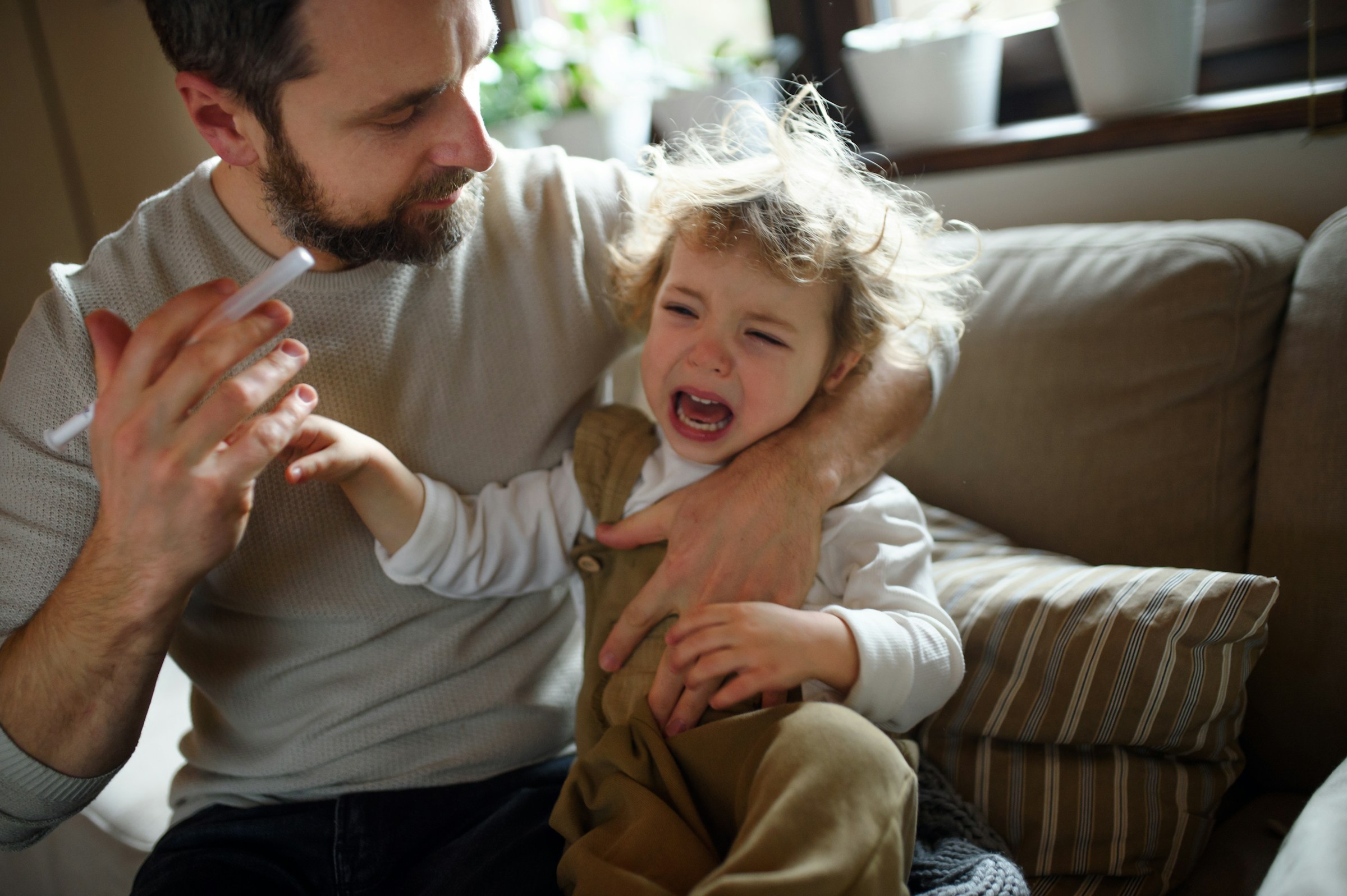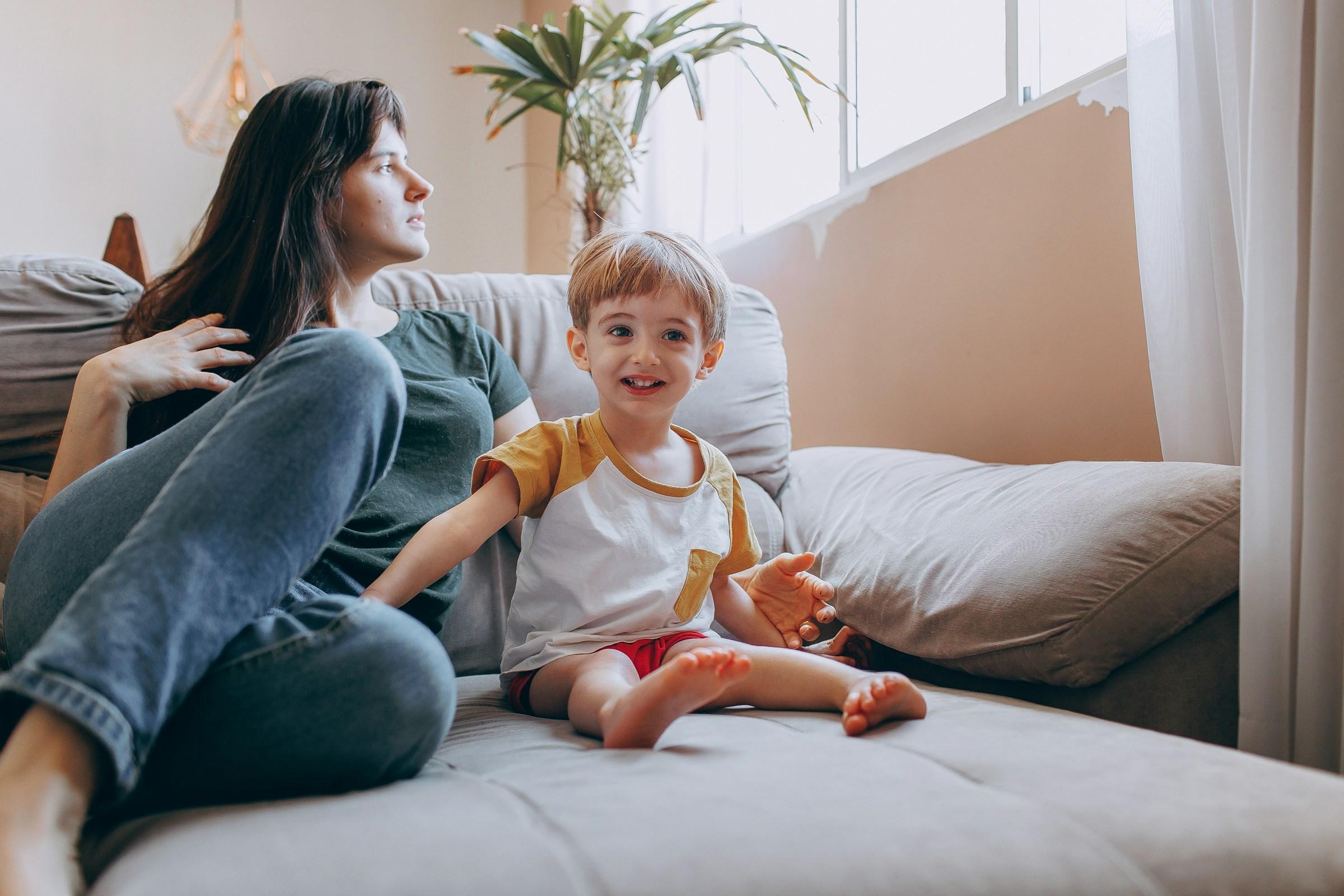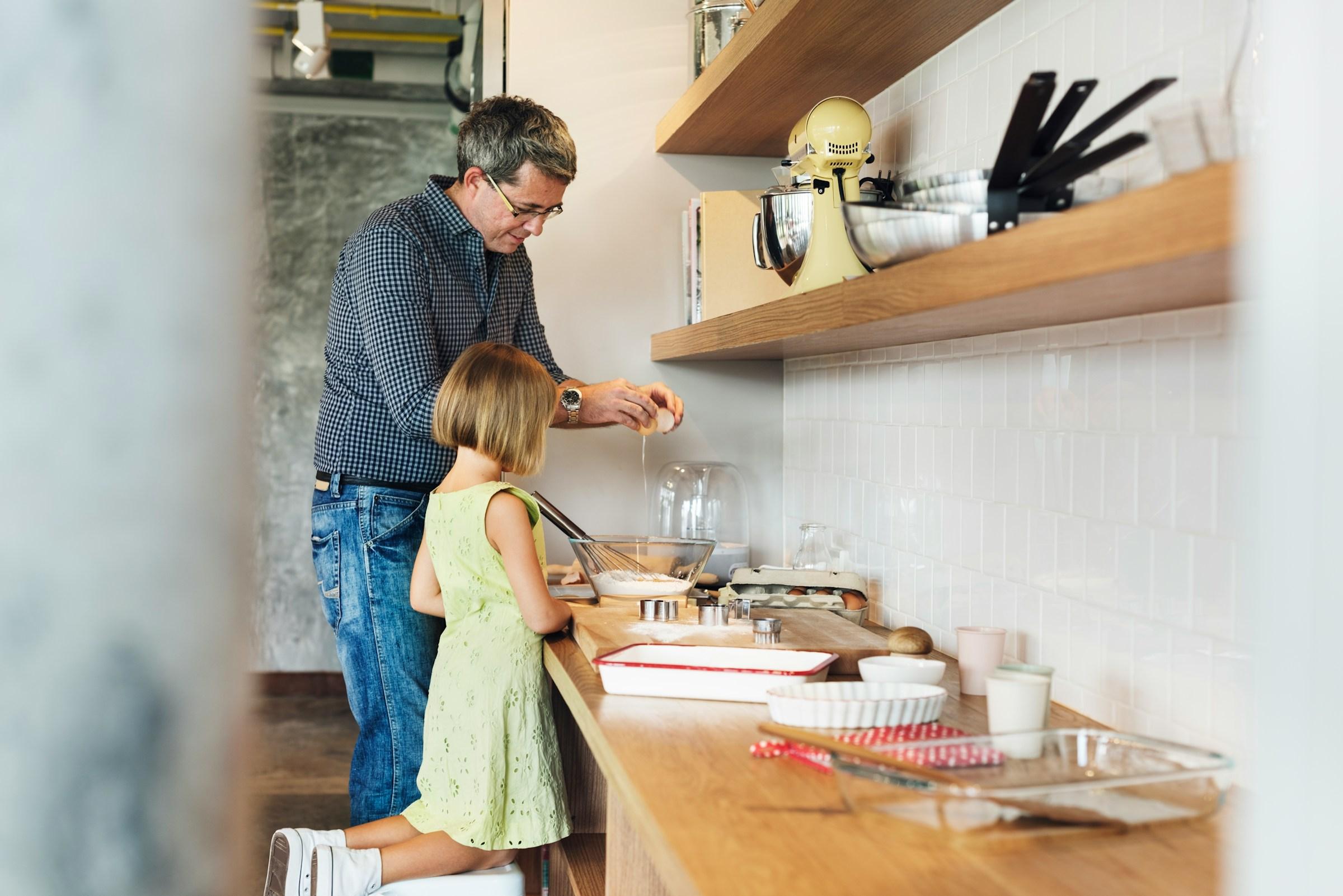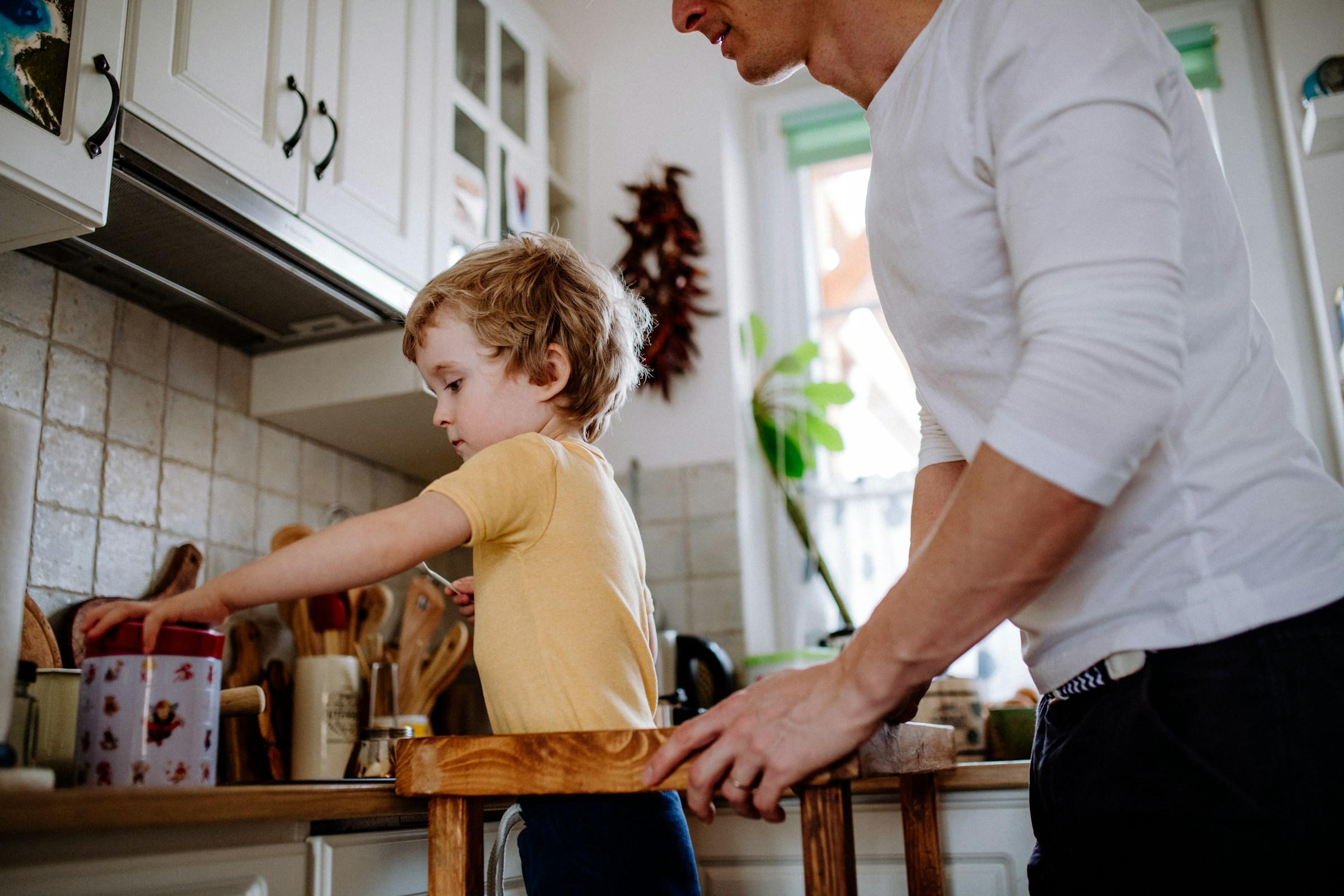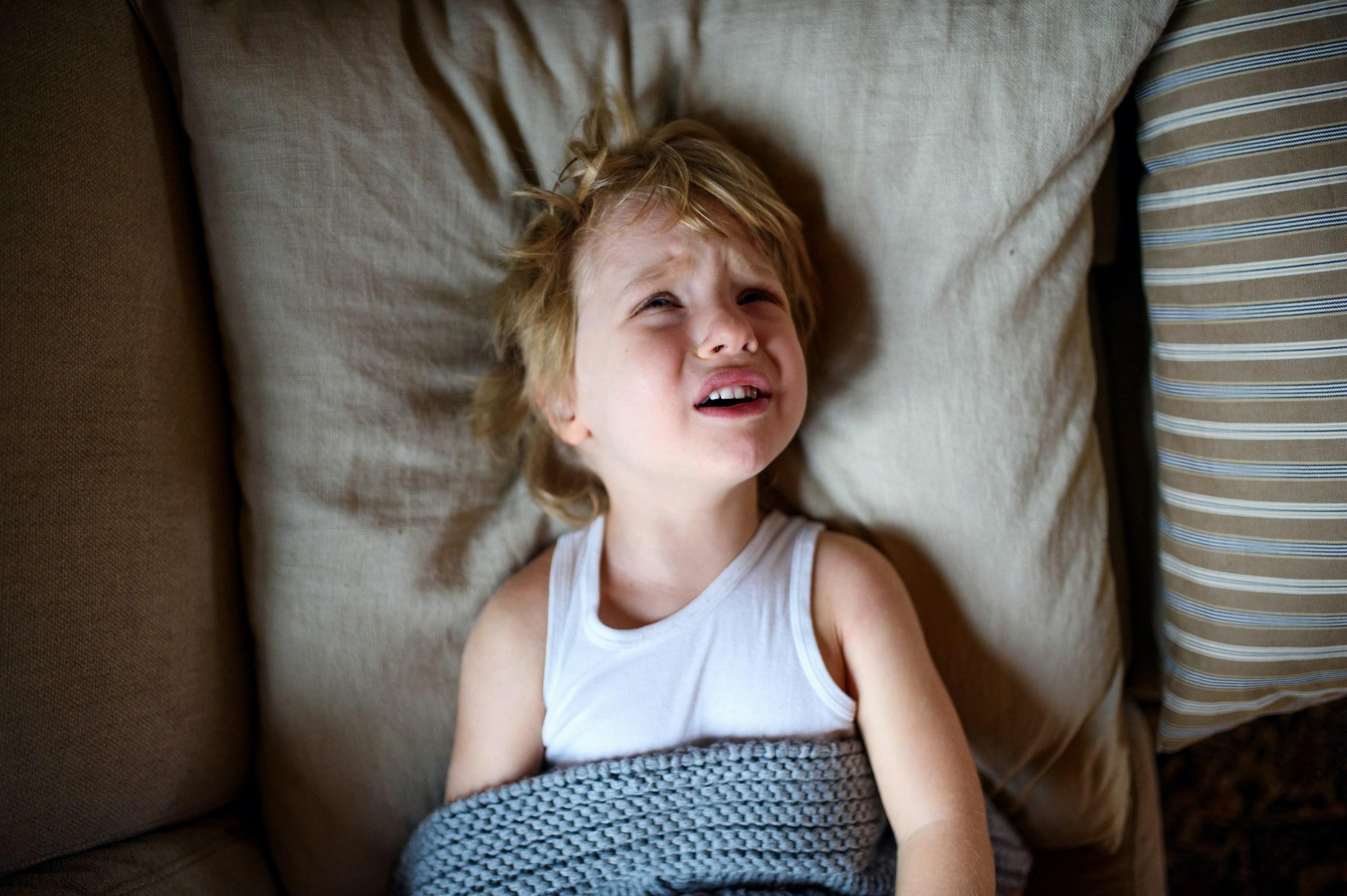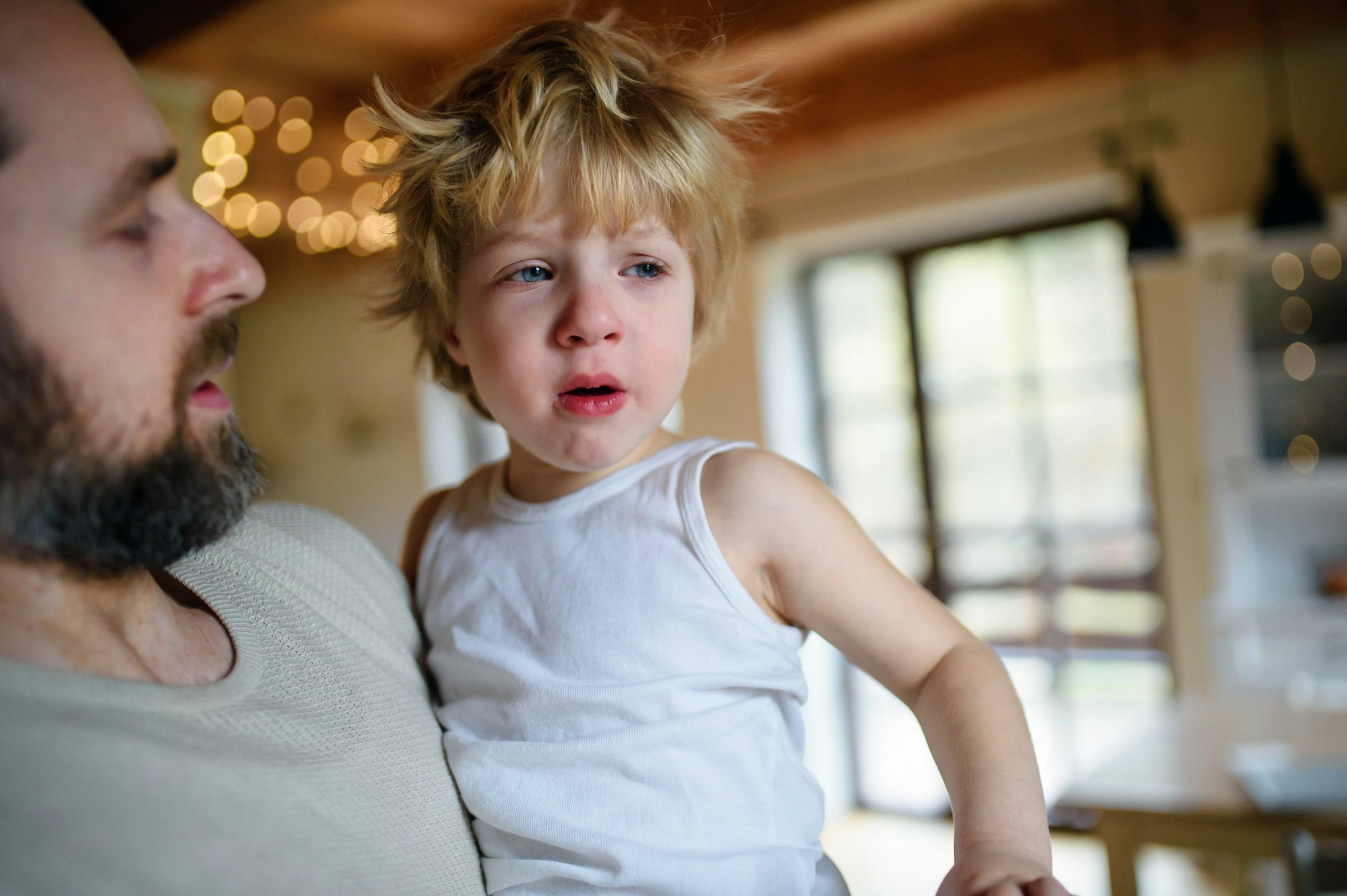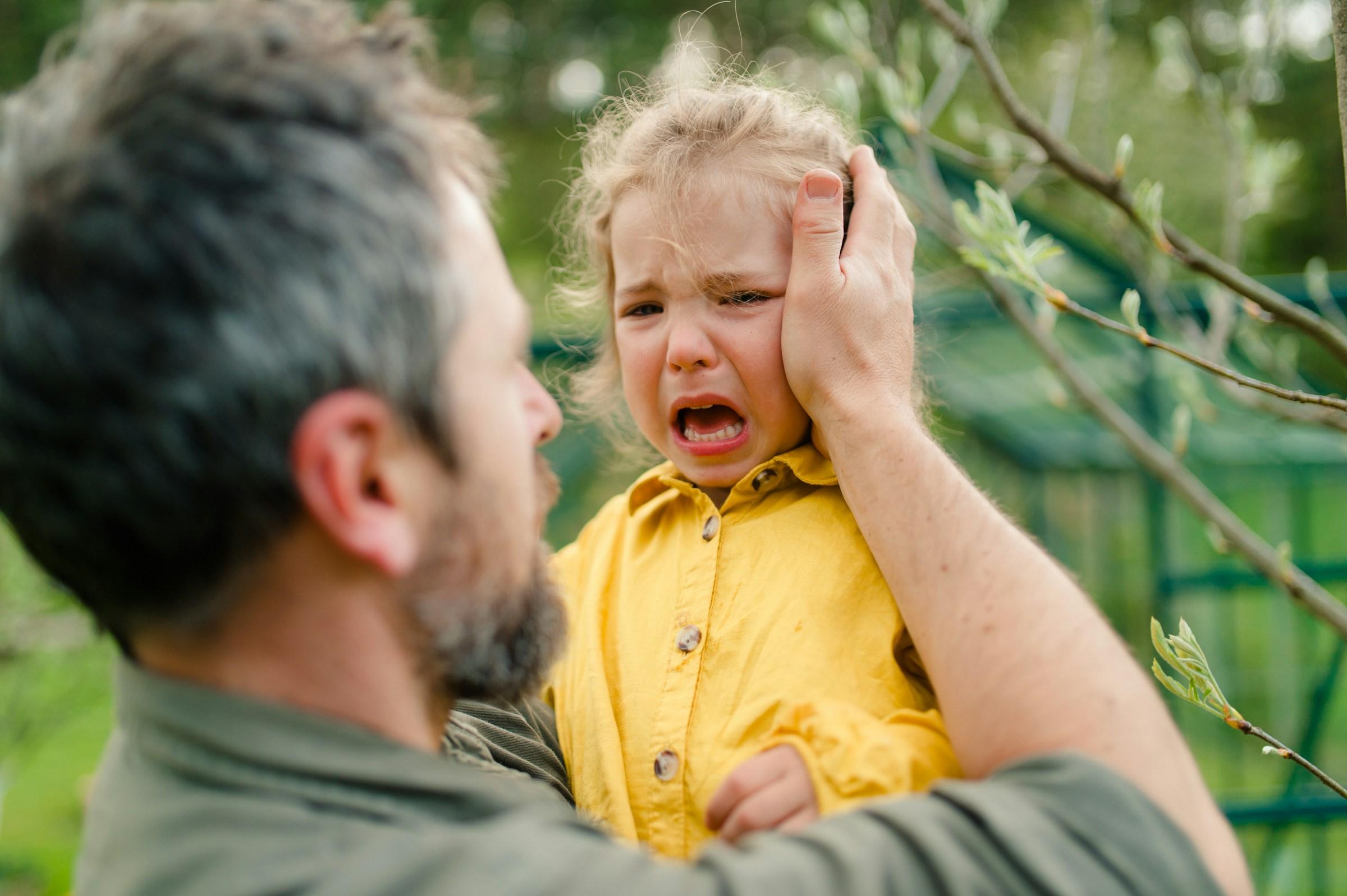Toddlers do not hit themselves because they are bad or broken. They do it because their nervous system is running hotter than their words can handle. The body goes first. The language lags behind. In that gap, a small hand becomes a quick hammer against a head or a cheek. Parents see the hit and feel a spike of fear or shame. Strangers stare. Advice flies in from all directions. Under that noise is a simple truth. This is a regulation problem. It needs a calm sequence that lowers the load, gives the body a safe task, and offers a short line the child can use next time. When you repeat that sequence with steady tone and simple words, the behavior shifts. Not overnight. Not through lectures. Through small, reliable inputs that the nervous system can trust.
The first move is always safety. Before you explain anything, prevent the impact. Catch the wrist with a gentle hold. Put your open hand between the small hand and the forehead. Move your body close enough to buffer the swing. Lower your voice. Keep your face soft. Speak fewer words. The goal is to signal safety through your posture and tone. A body that feels protected will quiet down faster than a body that hears a speech about rules. If the place is too loud or chaotic, make a small shift. Step into a hallway. Move to a quiet corner. Lock the stroller wheels and pause. These micro changes do not solve the cause, but they cut the stress in half. Once the body steps away from the cliff, the brain can listen.
Now you label the state, not the offense. Toddlers learn from words that describe the inside of the moment. One short line is enough. You can say, Your body feels too big. Or, That sound is too loud. Or, You wanted the red cup. The point is not to analyze. The point is to match the experience with language and lend your child your steady nervous system. You are saying, I see you, and I can name this. That is co regulation. It gives the child a way to map sensations to words. It also gives you a visible indicator that things are turning. Shoulders drop. Eyes come back. Breathing slows. That is your green light.
A child cannot stop a behavior in the middle of stress unless you give a concrete replacement. The brain needs a new path it can run without much thinking. Offer a specific action that uses the body in a safe way. Hands push the pillow. Hands clap three times. Hands press together. Hands hug the teddy. Keep the instruction short and the same each time. Then model it. Do the movement with your child for the first few repetitions so the brain can copy and paste the pattern. If you are out in public, adapt with what you have. A folded jacket can be a pillow. Your palms can become the press target. The stroller bar can be the push object. When the alternative is within reach, it will work under pressure. When it requires setup, it will fail.
Once you have stopped the hit and given the body a safe task, add a quick dose of regulation. Think in tens and threes rather than minutes. Ten to thirty seconds is enough. Use breath, pressure, or slow movement. You can do a simple count in and count out. Inhale for three. Hold for one. Exhale for three. Repeat two times. Or you can use deep pressure. A firm shoulder squeeze with your hands. A steady hug that lasts to a slow count of five. If your child responds to movement, try three slow squats together or a short wall push. These little inputs act like a release valve on a pressure cooker. End while it is working. If you push the exercise too long, it becomes noise and the effect fades.
As the body settles, it is time to teach the line your child can use next time. Keep it short enough to survive a hard moment. Two to four words only. Too loud. Help me. Blue cup please. Practice it once or twice in a normal tone. Then move on. The learning does not come from a long drill. It comes from many short reps across many days. If your toddler has limited speech, pair a gesture with a word. A palm out can mean stop. Hands to ears can mean noise. A simple point can mean that one. Use the same gesture and the same word together. Over time the word will take the lead.
Parents often say the hitting looks random. In most cases it is not. It clusters around tiredness, hunger, transitions, and sensory overload. A simple log for one week can reveal the pattern. Write down time, place, likely trigger, and which recovery move worked. You are not writing a diary. You are running a small experiment. When you see a pattern, you can change the setup. Offer a snack before pickup. Build in five minutes of quiet before leaving the house. Pack the preferred cup. Keep child sized headphones for noisy places. Prevention is not coddling. It is smart engineering for a small nervous system.
Transitions are a common trouble spot. The doorway between one activity and the next is where many little bodies lose their footing. Toddlers do not switch gears well without a cue. Add one signal and keep it the same. Use a two minute timer and say what happens next. Two minutes. Then shoes. Use the same words every time. Do not add bonus choices when you are short on time. Extra options create a scramble in a tired brain. Give your child a small job during the switch. Let them hold the shoe bag. Ask them to turn off the light. Invite them to press the elevator button. A little agency reduces friction. Less friction means fewer meltdowns.
Sleep and fuel are the quiet foundation that make every other tool work better. A tired or hungry body hits more. That is not weak will. That is biology. Protect sleep time as if it were an appointment. Protect snack windows. Carry water. Keep a small protein option in your bag. When the baseline is steady, you will notice that the protocol feels twice as effective. The small scripts you teach will also stick faster. A well rested brain stores new patterns with fewer repetitions.
Consistency across caregivers compresses learning time. A child learns fastest when every adult runs the same play. Share the steps with partners, grandparents, and teachers. Agree on the exact phrase. If one adult says Hands push pillow and another says Squeeze the teddy, the child is learning two commands for one need. Pick one and stick to it for a few weeks. Frequent switches blur the association and slow progress. If a caregiver has a strong preference for a different replacement or phrase, agree on it together and keep it stable.
The best practice happens outside the problem. Build a short play window once a day when everyone is calm. After breakfast works for many families. Before bath works for others. Spend two minutes. Say, If your body feels too big, what do hands do. Then practice the press, clap, or hug. Repeat the short line. End with a high five and move on. These easy reps build automatic responses you can call on during a hard moment without heavy coaching.
Your state is the backdrop for everything. Toddlers borrow your nervous system. If your voice spikes, their body spikes. If your face tightens, their body tightens. Take one breath before you act. Drop your shoulders. Lower your voice. Use fewer words. It feels slow, but it is faster. You will not do this perfectly. When you slip, repair. Say, I got loud. I am going to try again. Then run the sequence. Repair is part of the lesson. You are not performing perfection. You are modeling regulation.
What should you expect over time. In the first week you will usually see faster recovery. The hits may still appear, but the stop, replace, and regulate steps will run smoother. In weeks two through four you may see earlier signals. Your child might clench fists, freeze for a moment, or look at you before a hit. That look is a gift. It is your window to get in early with a label and a replacement. After about a month you will often see the new pattern generalize. The same short script starts to work in new settings. The number of high intensity moments drops. Short resets replace long battles. Keep the brief practice windows. Keep the language the same. Later you can reduce the frequency of practice while keeping the tools alive.
There are times when you should add professional help. Reach out to your pediatrician or a child development specialist if your child leaves marks or bruises, shows head banging that does not ease with your protocol, has frequent episodes without a clear trigger, loses previously learned skills, avoids eye contact most of the time, does not respond to name consistently, or has very limited language after the second birthday. Your calm steps still matter, but an evaluation can rule out medical or developmental factors and can add tailored support. Early help makes learning easier for everyone.
The work here is not about control or shame. It is about building a nervous system that can handle real life. The sequence stays the same. Protect the head. Name the internal state in one line. Offer a precise body based replacement and model it. Add a small regulation dose through breath, pressure, or slow movement. Teach a tiny script. Track patterns and adjust the setup. Tighten transitions and give a small job. Normalize sleep and fuel. Align caregivers. Practice in calm. Keep your own state steady and repair when you slip. These inputs are not flashy. They are steady. That is why they work.
Parents often want a single trick for how to stop toddlers from hitting themselves. There is no magic trick, but there is a simple protocol that gets stronger with every repeat. It is the same in the supermarket line, during a preschool handover, and at bedtime when stamina is low. Precision beats intensity. Fewer words beat long lectures. Gentle prevention beats big reactions. When you run the same play in calm and in stress, the small body in front of you learns that the world is safe and predictable. In that safety, new choices appear. The hand does not need to swing. The mouth can ask for help. The eyes can search for you. Progress is quiet. It is also real.



